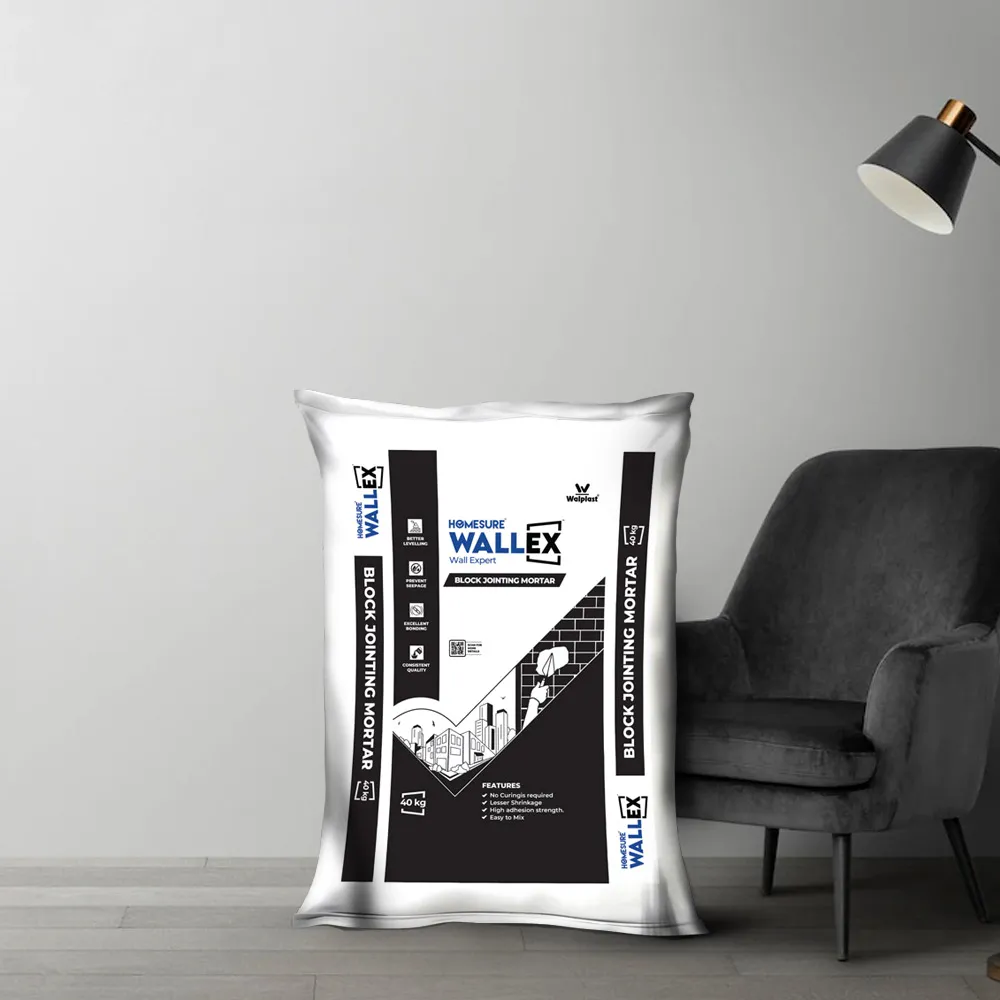Benefit & Advantages
-Easy to apply & gives better levelling
-Zero Wastage
-No Shrinkage Cracks
-No Curing Required
-Save Time
-Cost-Effective
Applications
-Clean loose particles, dirt, grease and traces of foreign materials from the surface, if necessary, by
using wire brush/sandpaper or by chipping.
-For loose plaster areas or floors/wall which are not even, then remove the defective material and
re-plaster the area with Home Sure Ready-Mix Plaster to make them even.
-Take approx.200-300 ml of clean water for 1 Kg of Block Jointing Mortar in a clean bucket. It is very
important that add material into water and not vice versa.
-Stir continuously for 3-5 minutes by using mechanical stirrer or by hand to obtain a homogeneous
lump- free paste.
-Allow the resultant paste to stand for about 10 minutes for the additives to dissolve.
-Re-mix again for about 2 Minutes. The mixture is now ready to apply.
-Block Jointing Mortar can be laying and joining of masonry units like Fly Ash block, ACC block,
hollow, concrete blocks etc.
-Before application surface should be clean and free from dust, grease, oil and any other foreign
material.
-Pre-wet the surface of the block before applying mortar. Allow excess water to drain off.
-Apply the material on the block evenly with trowel. For best results it is advisable to use notch
trowel of 3 to 4 mm to have better contact and bonding.
-Application should be done by the angle between 35 to 45 degrees, using the right amount of
pressure.
-Use fiber hammer to remove any air gaps in between blocks for proper jointing and alignment.
-Fill the gap between two blocks with the help of trowel and remove excess material.
-Mortar should be spread on all sides of the block in such way to maintain the bond thickness 2-3
mm.
-The coverage area however will depend upon the quality and evenness of the substrate, thickness
of joints.
-Do not add more water than recommended.
-Maximum thickness should not more than 2-3 mm.
-Block Jointing Mortar contains non-toxic material but still, it is important to wear a safety kit when
mixing and handling.

